Abstract
The effect of intravenous vasoactive intestinal polypeptide (VIP) on normal transport mechanisms in the human jejunum in vivo was examined with the triple-lumen, steady-state perfusion technique. By using special test solutions that revealed different aspects of jejunal transport, we were able to evaluate the effect of VIP on specific transport processes, such as active bicarbonate absorption, active chloride secretion, and passive absorption or secretion of sodium chloride. At an infusion rate of 200 pmol/kg per h, VIP inhibited active bicarbonate absorption by approximately 42%, stimulated active chloride secretion to a slight extent, and slightly reduced passive sodium chloride absorption. A larger dose of VIP, 400 pmol/kg per h, had essentially the same effect on active bicarbonate absorption and active chloride secretion, but it markedly depressed passive sodium chloride absorption and also inhibited passive secretion induced by mannitol. VIP reduced the lumen-to-plasma unidirectional sodium and chloride flux rates, while the plasma-to-lumen flux rates were decreased to a lesser extent or remained unchanged. The potential difference became more lumen-negative with VIP, but the sodium diffusion and glucose-stimulated potential were not affected. We conclude that the major effect of VIP in the human jejunum is to decrease the normal absorption of water and electrolytes--not only active bicarbonate-mediated absorption, but also the passive absorption in response to osmotic forces generated by active or facilitated absorptive processes. Although an increase in chloride secretion does occur, this does not appear to be of major importance.
Full text
PDF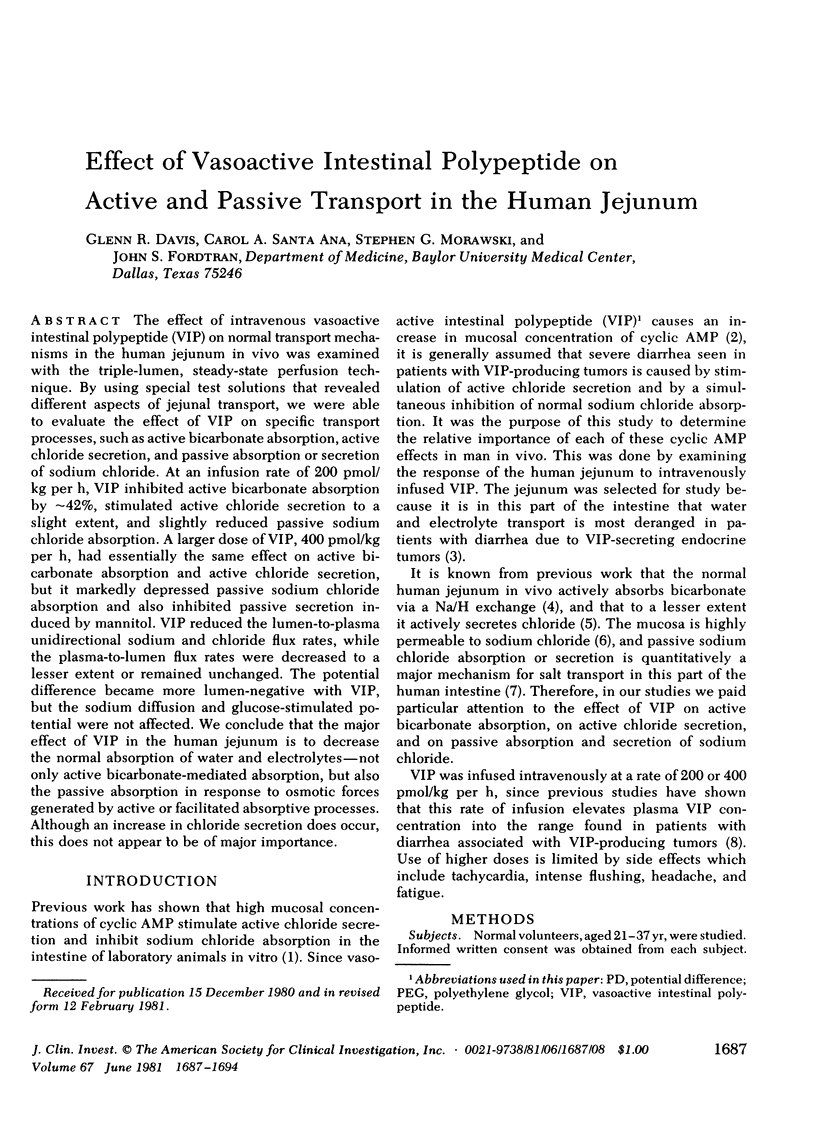
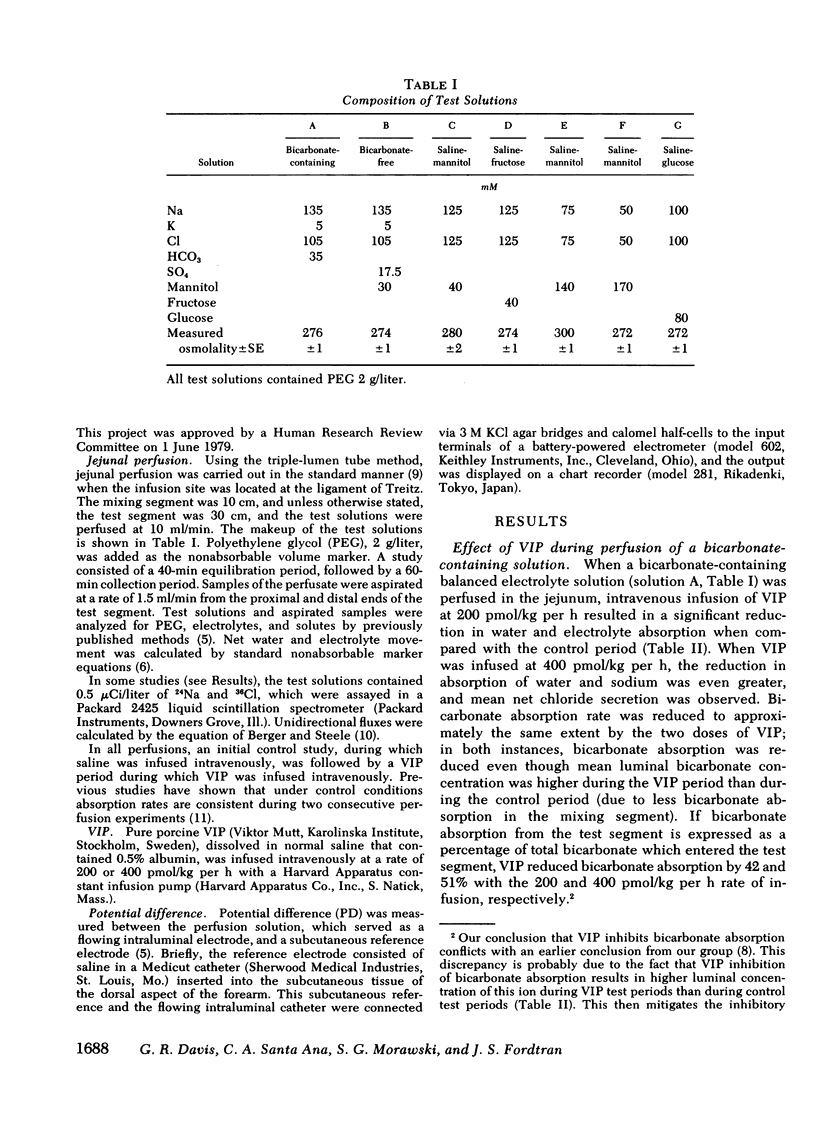
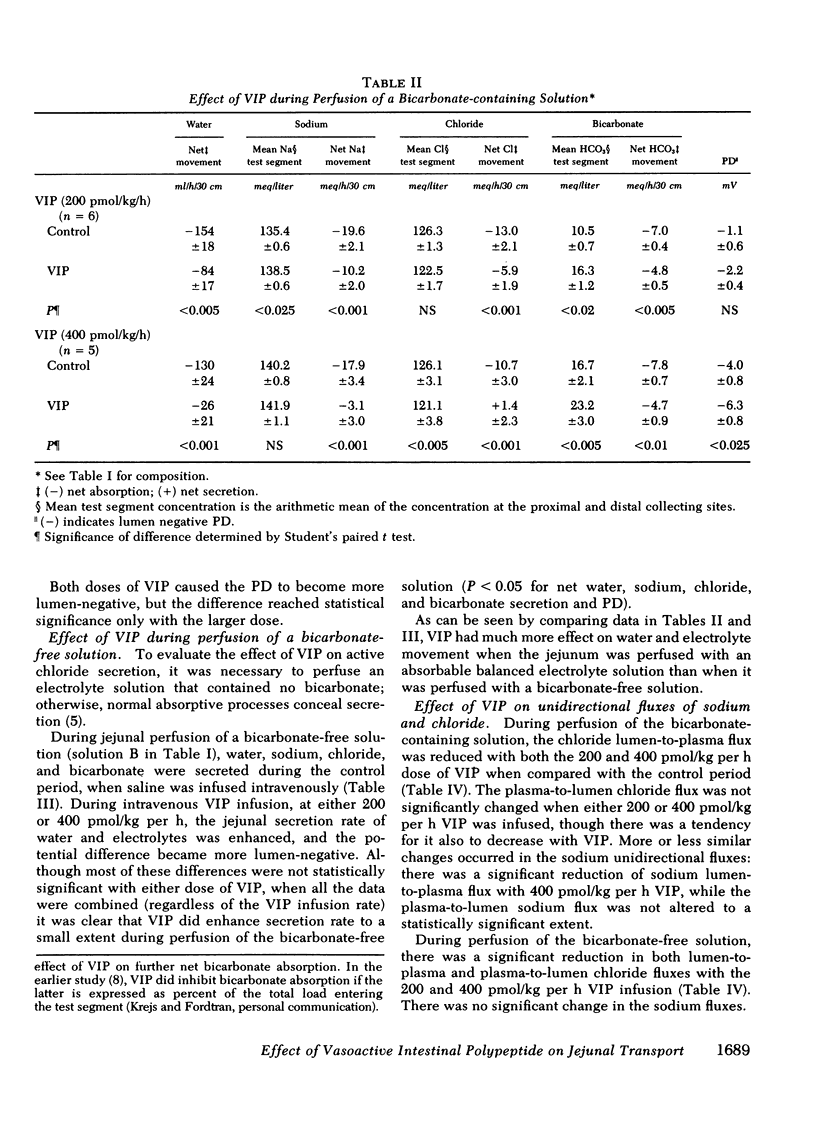
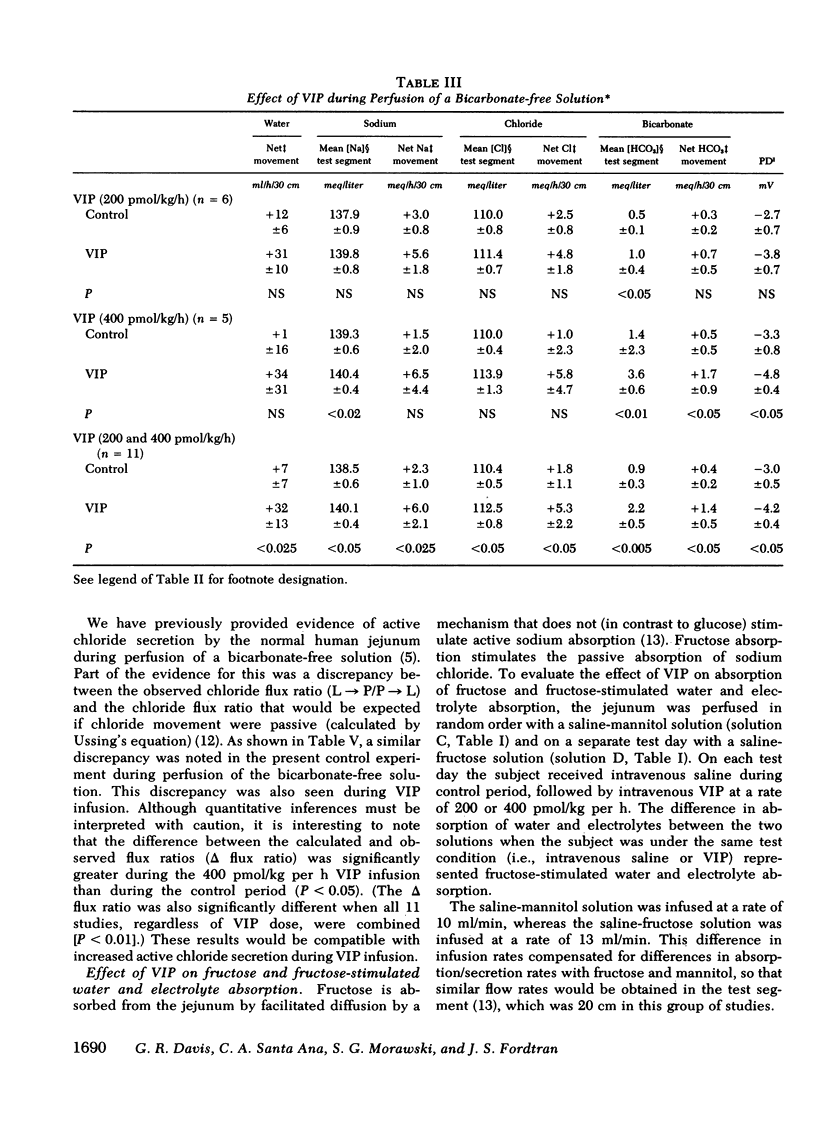
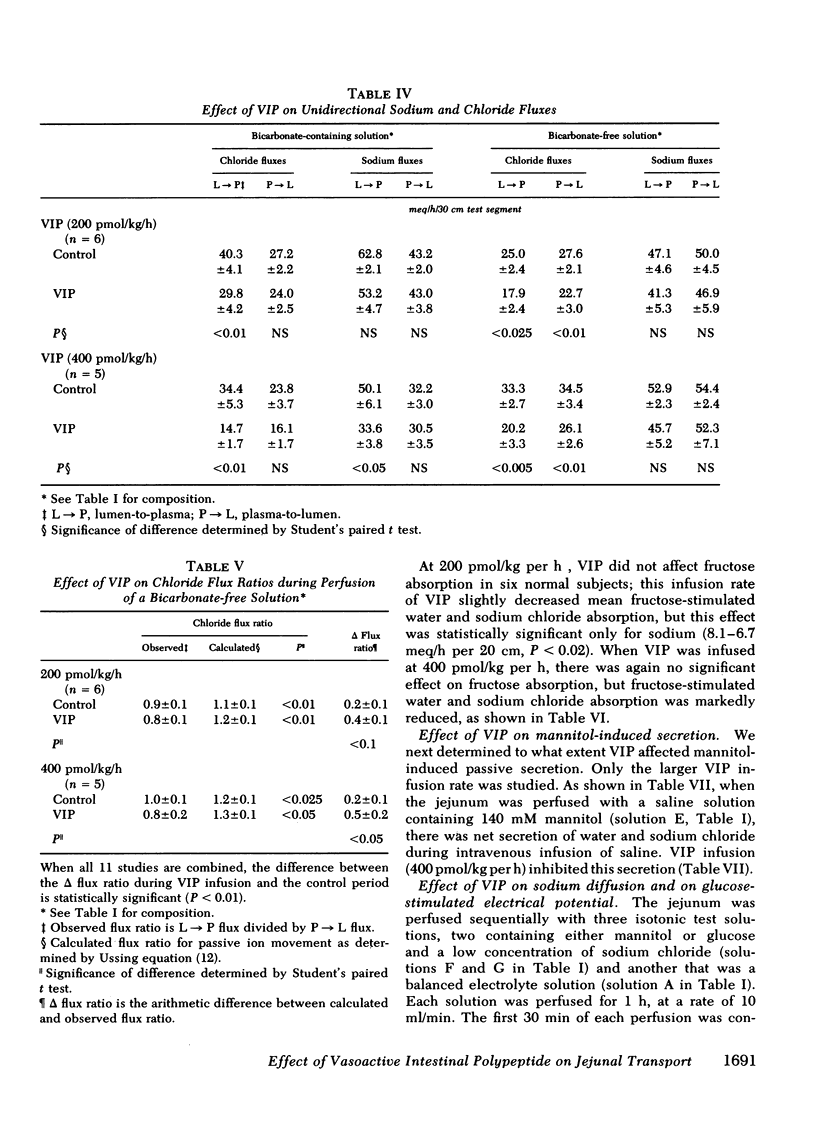
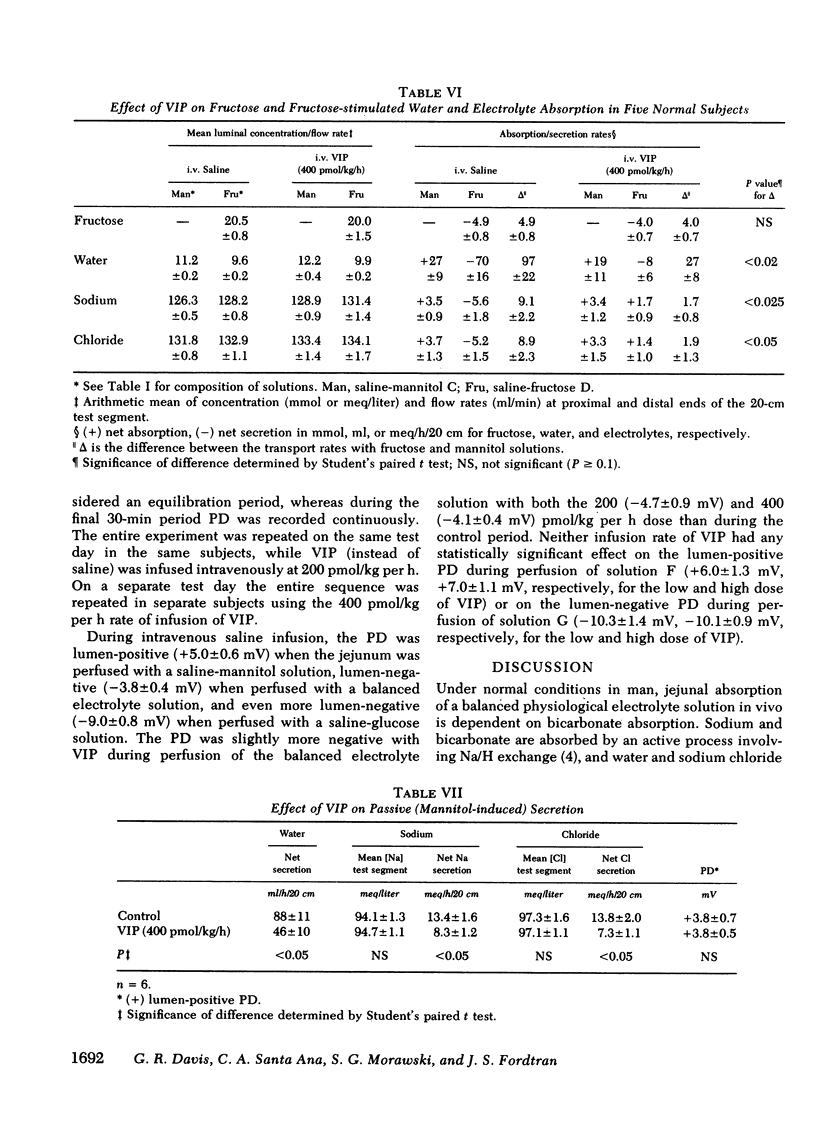
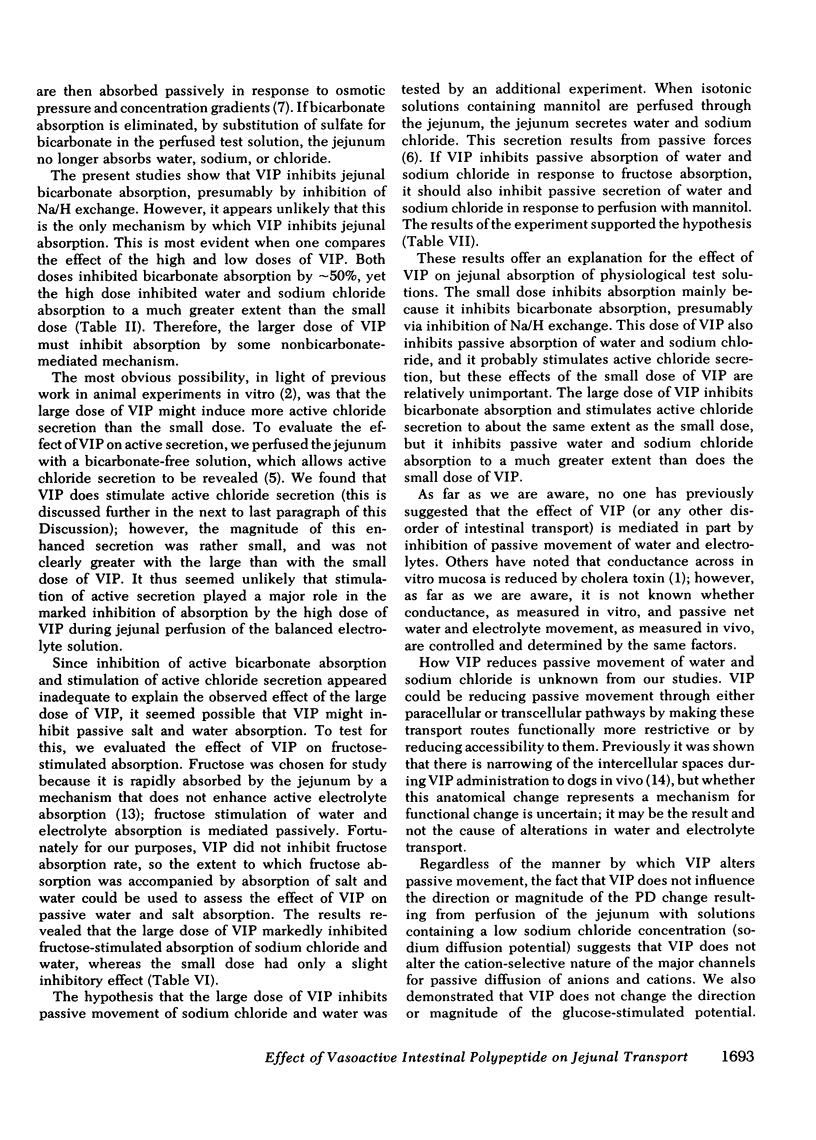
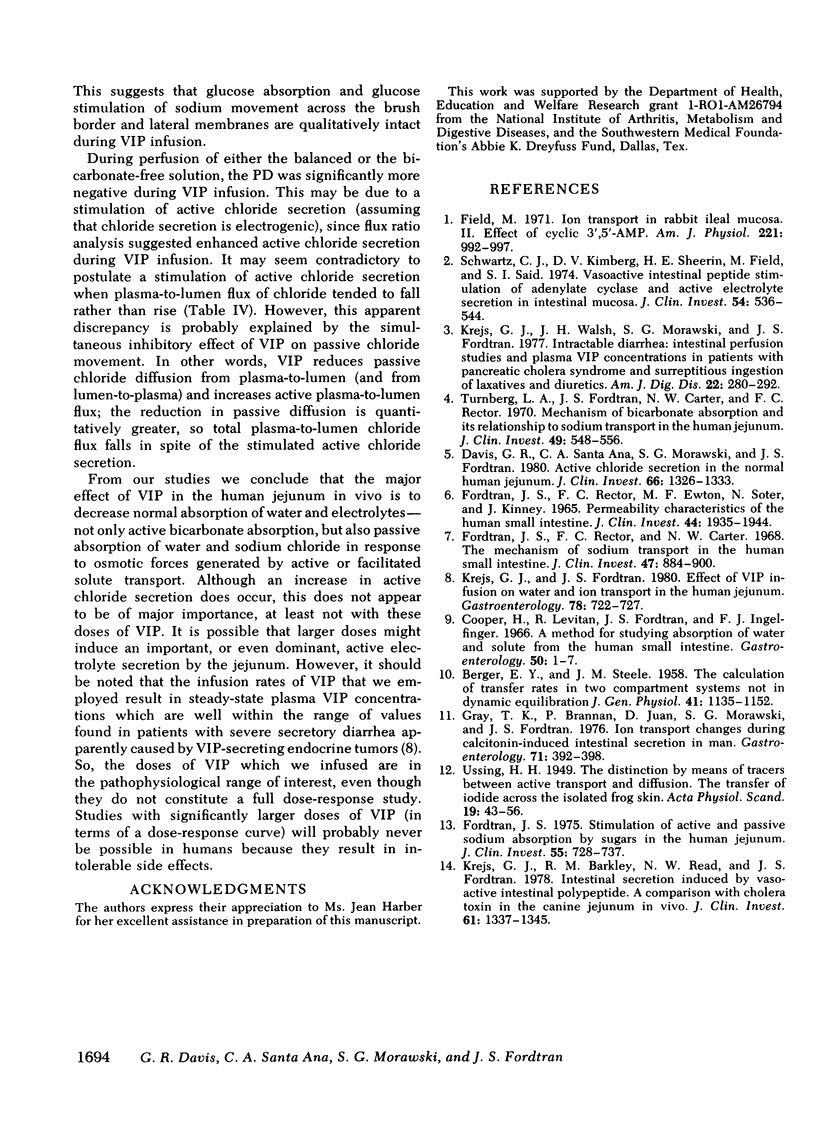
Selected References
These references are in PubMed. This may not be the complete list of references from this article.
- BERGER E. Y., STEELE J. M. The calculation of transfer rates in two compartment systems not in dynamic equilibrium. J Gen Physiol. 1958 Jul 20;41(6):1135–1152. doi: 10.1085/jgp.41.6.1135. [DOI] [PMC free article] [PubMed] [Google Scholar]
- Cooper H., Levitan R., Fordtran J. S., Ingelfinger F. J. A method for studying absorption of water and solute from the human small intestine. Gastroenterology. 1966 Jan;50(1):1–7. [PubMed] [Google Scholar]
- Davis G. R., Santa Ana C. A., Morawski S., Fordtran J. S. Active chloride secretion in the normal human jejunum. J Clin Invest. 1980 Dec;66(6):1326–1333. doi: 10.1172/JCI109985. [DOI] [PMC free article] [PubMed] [Google Scholar]
- Field M. Ion transport in rabbit ileal mucosa. II. Effects of cyclic 3', 5'-AMP. Am J Physiol. 1971 Oct;221(4):992–997. doi: 10.1152/ajplegacy.1971.221.4.992. [DOI] [PubMed] [Google Scholar]
- Fordtran J. S., Rector F. C., Jr, Carter N. W. The mechanisms of sodium absorption in the human small intestine. J Clin Invest. 1968 Apr;47(4):884–900. doi: 10.1172/JCI105781. [DOI] [PMC free article] [PubMed] [Google Scholar]
- Fordtran J. S., Rector F. C., Jr, Ewton M. F., Soter N., Kinney J. Permeability characteristics of the human small intestine. J Clin Invest. 1965 Dec;44(12):1935–1944. doi: 10.1172/JCI105299. [DOI] [PMC free article] [PubMed] [Google Scholar]
- Fordtran J. S. Stimulation of active and passive sodium absorption by sugars in the human jejunum. J Clin Invest. 1975 Apr;55(4):728–737. doi: 10.1172/JCI107983. [DOI] [PMC free article] [PubMed] [Google Scholar]
- Gray T. K., Brannan P., Juan D., Morawski G., Fordtran J. S. Ion transport changes during calcitonin-induced intestinal secretion in man. Gastroenterology. 1976 Sep;71(3):392–398. [PubMed] [Google Scholar]
- Krejs G. J., Barkley R. M., Read N. W., Fordtran J. S. Intestinal secretion induced by vasoactive intestinal polypeptide. A comparison with cholera toxin in the canine jejunum in vivo. J Clin Invest. 1978 May;61(5):1337–1345. doi: 10.1172/JCI109051. [DOI] [PMC free article] [PubMed] [Google Scholar]
- Krejs G. J., Fordtran J. S., Fahrenkrug J., Schaffalitzky de Muckadell O. B., Fischer J. E., Humphrey C. S., O'Dorisio T. M., Said S. I., Walsh J. H., Shulkes A. A. Effect of VIP infusion in water and ion transport in the human jejunum. Gastroenterology. 1980 Apr;78(4):722–727. [PubMed] [Google Scholar]
- Krejs G. J., Walsh J. H., Morawski S. G., Fordtran J. S. Intractable diarrhea. Intestinal perfusion studies and plasma VIP concentrations in patients with pancreatic cholera syndrome and surreptitious ingestion of laxatives and diuretics. Am J Dig Dis. 1977 Apr;22(4):280–292. doi: 10.1007/BF01072184. [DOI] [PubMed] [Google Scholar]
- Schwartz C. J., Kimberg D. V., Sheerin H. E., Field M., Said S. I. Vasoactive intestinal peptide stimulation of adenylate cyclase and active electrolyte secretion in intestinal mucosa. J Clin Invest. 1974 Sep;54(3):536–544. doi: 10.1172/JCI107790. [DOI] [PMC free article] [PubMed] [Google Scholar]
- Turnberg L. A., Fordtran J. S., Carter N. W., Rector F. C., Jr Mechanism of bicarbonate absorption and its relationship to sodium transport in the human jejunum. J Clin Invest. 1970 Mar;49(3):548–556. doi: 10.1172/JCI106265. [DOI] [PMC free article] [PubMed] [Google Scholar]


